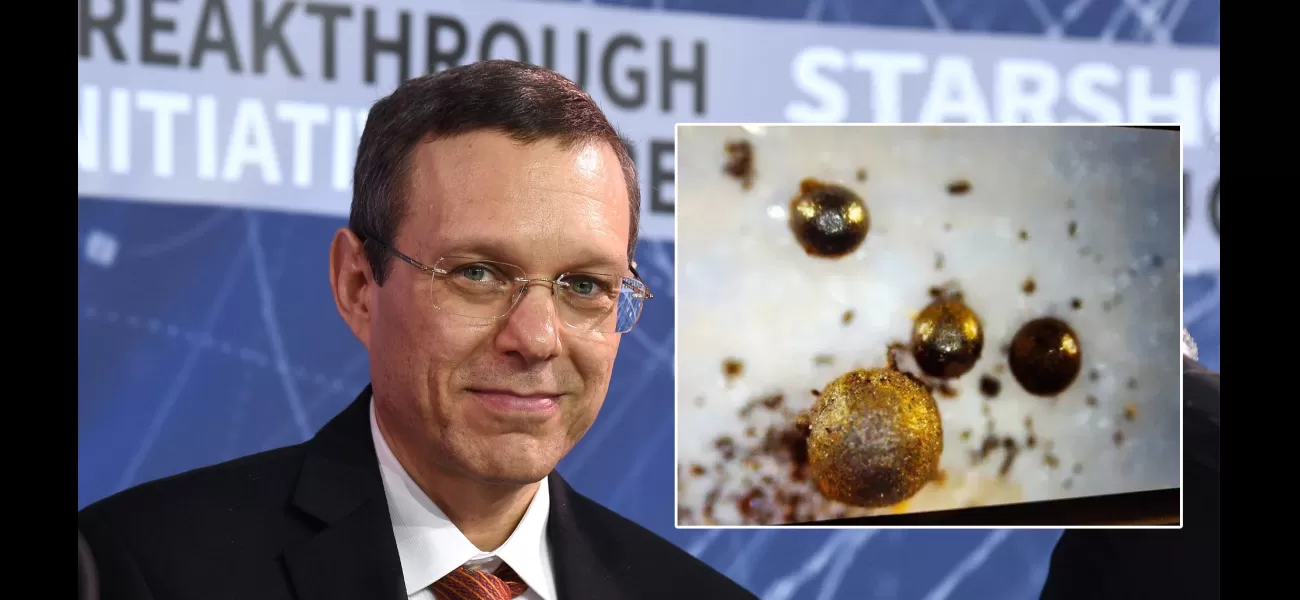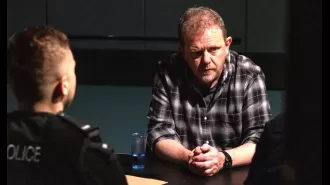Mystery objects could be from another world or even alien tech.
Experts disagree on the issue.
September 4th 2023.

Professor Avi Loeb's findings have divided the scientific community and are generating much debate. Last week, Harvard professor Avi Loeb revealed his analysis of hundreds of spherules collected by his team in the region where meteorite IM1 was known to have crashed. His findings suggest that these spherules are unlike any meteorites seen before and do not hail from our own solar system.
Dr Phil Sutton, an astrophysicist at the University of Lincoln, believes that these spherules may have come from another star system and are potentially part of a planet from another star system. He suggests the most likely explanation is that an object similar to what wiped out the dinosaurs here on Earth hit a planet in another star system and sent some material out from the core and magma ocean which has then melted together in the impact and was ejected with such force that it was able to escape the star system it was from.
The impact of IM1 was recorded travelling at 28 miles per second, much faster than other meteors, and US Space Command issued its own statement confirming IM1 was of interstellar origin. This has prompted speculation as to whether it was more than a meteorite or where it may have come from. Dr Sutton believes that others may have sent out probes searching for alien life just as humans have done, and suggests that it is perfectly plausible that the spherules could be an alien spacecraft.
Meanwhile, Professor Loeb wrote on his Medium blog that he had received much pushback from experts on space rocks, but that the discovery of the spherules had proved them wrong. Astronomer Royal Lord Martin Rees, however, isn't convinced by Professor Loeb's findings and believes they are over-hyped. Professor Monica Grady, professor of planetary and space sciences at The Open University, suggests that the spherules could have originated from the Marshall Islands, the site of 67 nuclear tests by the US between 1946 and 1958, and could be fallout from the nuclear tests. She has offered to do her own analysis of the spherules to investigate this possibility.
The team has since analysed the material under electron microscopes at UC Berkeley and found that inside the spherules are more spherules. Travelling to Papua New Guinea in June, Professor Loeb and his team used a sledge full of magnets to scrape the seafloor near the meteor crash site and returned the tiny pieces to Harvard, alongside tubes of volcanic ash from the site and control objects from adjacent areas.
The debate surrounding Professor Loeb's findings continues as the scientific community continues to analyze the evidence. It is clear that the mystery of the spherules has yet to be solved.
Dr Phil Sutton, an astrophysicist at the University of Lincoln, believes that these spherules may have come from another star system and are potentially part of a planet from another star system. He suggests the most likely explanation is that an object similar to what wiped out the dinosaurs here on Earth hit a planet in another star system and sent some material out from the core and magma ocean which has then melted together in the impact and was ejected with such force that it was able to escape the star system it was from.
The impact of IM1 was recorded travelling at 28 miles per second, much faster than other meteors, and US Space Command issued its own statement confirming IM1 was of interstellar origin. This has prompted speculation as to whether it was more than a meteorite or where it may have come from. Dr Sutton believes that others may have sent out probes searching for alien life just as humans have done, and suggests that it is perfectly plausible that the spherules could be an alien spacecraft.
Meanwhile, Professor Loeb wrote on his Medium blog that he had received much pushback from experts on space rocks, but that the discovery of the spherules had proved them wrong. Astronomer Royal Lord Martin Rees, however, isn't convinced by Professor Loeb's findings and believes they are over-hyped. Professor Monica Grady, professor of planetary and space sciences at The Open University, suggests that the spherules could have originated from the Marshall Islands, the site of 67 nuclear tests by the US between 1946 and 1958, and could be fallout from the nuclear tests. She has offered to do her own analysis of the spherules to investigate this possibility.
The team has since analysed the material under electron microscopes at UC Berkeley and found that inside the spherules are more spherules. Travelling to Papua New Guinea in June, Professor Loeb and his team used a sledge full of magnets to scrape the seafloor near the meteor crash site and returned the tiny pieces to Harvard, alongside tubes of volcanic ash from the site and control objects from adjacent areas.
The debate surrounding Professor Loeb's findings continues as the scientific community continues to analyze the evidence. It is clear that the mystery of the spherules has yet to be solved.
[This article has been trending online recently and has been generated with AI. Your feed is customized.]
[Generative AI is experimental.]
0
0
Submit Comment





